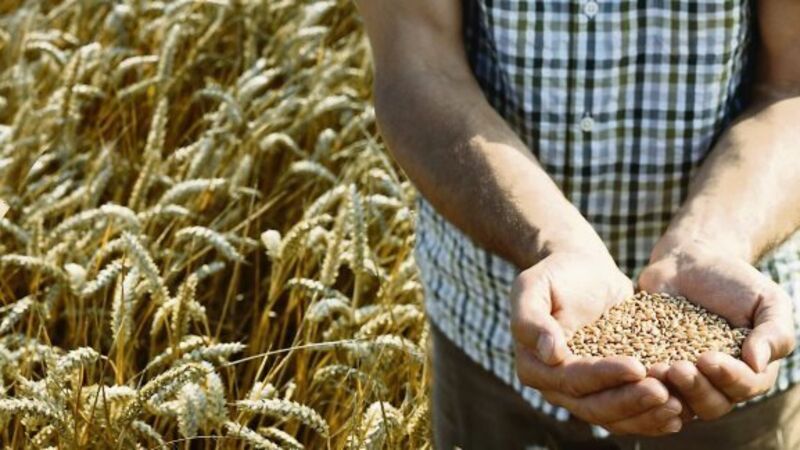Global grain prices continue to struggle

Traders in Paris have reported a sustained weakening in demand for European grain.
Egypt failed to to buy French grain at two tenders last week.
The 10-day run of falling grain prices is the longest decline seen for French grain in five years.
The traders say they’re worried that the EU will struggle to offload its big harvest, with exports from the bloc already lagging 15% behind last season.
French wheat for loading at the port of Rouen was offered for sale at a discount of €3 a metric tonne to futures prices, said Pierre Tronc, a broker at French investment company Aurel BGC.
“There’s really a kind of panic selling,” Mr Tronc told Bloomberg press agency.
“Farmers and co-operative are selling. Why are they selling? They are afraid prices will go down further, so they want to make some margin.”
Milling wheat for March delivery fell 0.7% to €152.25, the lowest for a most-active contract since July 2010, on the Euronext in Paris.
The losing streak for French grain prices is the longest since 2011.
The standoff in Egypt began after authorities rejected a French cargo, saying levels of the toxic ergot fungus in the wheat were too high.
Then last month, the French agriculture ministry said it would have zero tolerance for ergot in future, sending shockwaves through world markets as exporters complained it was impractical to stop the naturally occurring fungus entirely.
Egypt cancelled two tenders last week, one after sellers refused to offer grain and the second because prices were too high.
Algeria, Africa’s second-largest wheat buyer, bought the grain at a “very low” price last week, Tronc said.
The nation probably paid €158 to €160 a tonne, including the cost of freight in a tender that closed on February 3, a figure below the cost futures that day.
Aurel BGC said it still has a lot of grain remaining to be sold.
Meanwhile, Australia yesterday increased its wheat crop estimate to 24.2m metric tonnes for 2015-16, up marginally from the 24m tonnes forecast in December and 23.1m tonnes a year earlier, the most recent data from the Australian Bureau of Agricultural and Resource Economics and Sciences showed yesterday.
With Australian tillage farmers now having fully completed their harvest, most commodities showed increased output figures.
However, nationwide canola production reached 2.95m tonnes, compared with the 3m tonnes predicted in December.
Barley output may total 8.5m tonnes, up from 8.2m tonnes previously forecast.
Most barley failed to meet malting grade as unfavourable conditions affected grain quality, the Australian agriculture bureau reported.
However, cotton production may total 546,000 tonnes in 2015-16, compared with a prior estimate of 560,000 tonnes.
Rice production is forecast at 305,000 tonnes, unchanged from the December prediction and 58% less than a year earlier, due to reduced availability of irrigation water.









